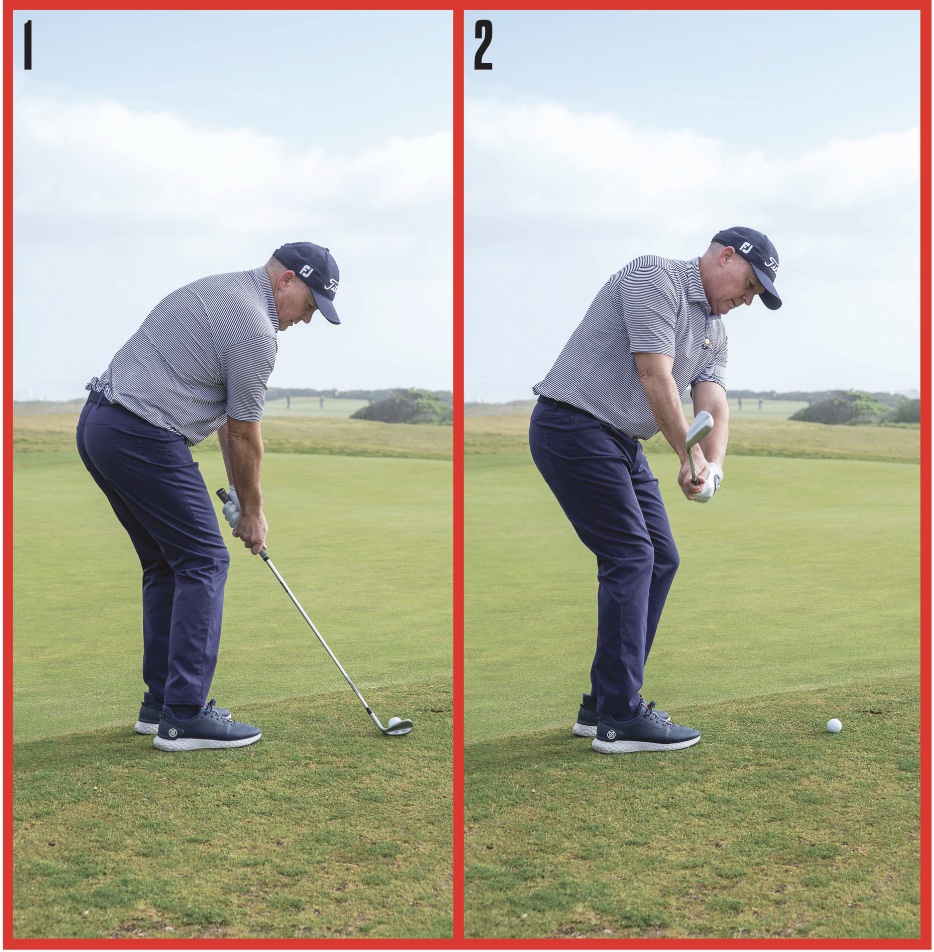PGA professional GRANT HEPBURN demonstrates the correct hand and ball positions for chipshots and explains why it is so important to get this right.
We have all been taught that one of the keys to effective chipping around the greens is to keep the ball back in your stance and your hands ahead of the ball through impact. This helps to ensure that we hit down on the ball, striking it cleanly before the club makes contact with the turf.
It’s a particularly effective technique when you’re facing a long chip with a lot of green to work with and can hit a low, running shot.
However, I sometimes see that ammies take this advice to the other extreme and end up overdoing it, which can lead to its own set of problems. Having the ball too far back in your stance creates an overly steep swing that can change the bounce angle of your wedge.
Getting it right
In this correct sequence, I set up with the ball close to the middle of my stance, with my hands only marginally ahead of the ball.
This allows my clubface to naturally rotate in the backswing, into a square position, where the toe of the club points to the sky.
When you do this, the clubface is encouraged to return to the ball with a square (neutral) face and, most importantly, the bounce underneath the clubhead can be used effectively.
Bounce is the angle created between the leading edge of the club and the lowest point of the sole. This is the area of the club that hits through the ground as it contacts the ball.
Bounce is really important in chipping, as it helps the club to skim across the top of the grass without digging in.
It also provides forgiveness for marginal mis-hits in the impact area because a slight mis-hit will be helped by the bounce of the club, which will act like a rudder and stop the club from getting stuck in the turf.
Getting it wrong
In this incorrect sequence, I have set up the ball too far back in my stance and my hands are too far forward. As a result, my clubface will be closed in my backswing and in my downswing.
You can see how my clubface is no longer toe up, and the face is pointing towards the ground.
The problem here is that the leading edge of the clubface will reach the ground first and will likely come into contact with the turf, which will result in it digging into the ground and becoming stuck.
Any mishap will result in a mis-hit shot because the club will stick into the ground and disrupt the stroke through impact.
– This article first appeared in the November 2023 issue of Compleat Golfer magazine.













